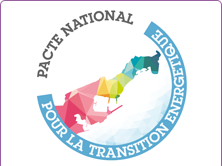Ocean thermal energy: the Principality’s blue gold
The Principality’s new energy regulations, which entered into force on 1 January 2019, ban the use of fuel oil for heating and hot water from 1 January 2022.
To support the energy transition of buildings which still operate on fuel oil, the Prince’s Government has decided to install two ocean thermal energy loops in the districts of La Condamine and Larvotto. These loops will provide the buildings concerned with heat pumps* that will supply hot water, heat and air conditioning while consuming very little electricity.
Another renewable energy source with strong potential that is already being well used in Monaco is the energy of the sea. While air temperature varies a great deal according to season, the sea enjoys relatively stable temperatures at depth all year round.
Using heat pump technology, it is possible to draw heat or cold from seawater to warm or cool buildings, or to heat swimming pools. Buildings which take advantage of this form of energy need to consume electricity to operate the heat pumps, which then produce between three and four times more energy than they use.
The Optima PAC project, which was completed in Monaco in 2015, showed that heat pump technology did not have a harmful effect on the marine environment, and that it would be possible to further optimise its performance in the future.
Monaco was one of the first countries to develop the use of this type of energy along its coastline. The Principality installed its first seawater heat pump in 1963 at the Rainier III Outdoor Swimming Stadium to heat the water for the pool. The country now has more than 80 pumps.
Some of the buildings in Monaco which are heated or cooled using seawater heat pumps include the Grimaldi Forum, the Oceanographic Museum, the Rainier III Auditorium and the SBM buildings.
The Principality has plans to develop two ocean thermal energy loops to expand the use of this source. Instead of having one seawater heat pump per building, these pumps will be linked to a water system circulating through pipes feeding several buildings, some of which may be further away from the coast. This will improve the efficiency of the technology, reduce costs and allow more buildings to benefit from this source of energy.
There are plans to develop one such loop in the Condamine district, and another in Larvotto. This will provide a particularly attractive alternative for buildings currently heated using fuel oil, or which have air conditioning installed, providing significant reductions in greenhouse gas emissions in the region of 80%. If these buildings were to opt to switch to natural gas for heating in place of fuel oil, there would only be a 25% reduction in emissions. Ocean thermal energy loops are an important step on the path to energy transition.
Monaco’s expertise in heat pumps dates back to the 1960s. The Principality was one of the first countries to develop this kind of renewable energy on its coastline, installing its first seawater heat pump at the Rainier III Outdoor Swimming Stadium in 1963 to heat the water for the pool.
There are now more than 80 seawater heat pumps throughout Monaco. Among the most iconic are those at Grimaldi Forum, the Oceanographic Museum, the Rainier III Auditorium and SBM’s hotels and restaurants.
These two new ocean thermal energy loops will enable a large number of buildings to benefit from this ‘clean’ energy source.
Particularly useful for buildings currently heated using fuel oil, or which have air conditioning installed, this environmentally friendly alternative will lead to reductions in greenhouse gas emissions in the region of 80%.
* heat pump technology captures the energy naturally present in the environment (particularly in seawater), and uses it to heat or cool buildings and/or to produce hot water.
You can read the press release issued by the Prince's Government on the signature of the concession agreement here : https://energy-transition.gouv.mc/Energy-Transition/News/Concession-agreement-for-ocean-thermal-energy-loops-signed
Interested in ocean thermal energy? Watch the film ‘Thalassothermie : l'or Bleu de la Principauté’ (‘Ocean thermal energy: The Principality’s blue gold’) on YouTube : https://www.youtube.com/watch?v=kMY4dkX2gUY
More details on www.seawergie.mc


[#YourMonaco]
— Gouvernement Monaco (@GvtMonaco) July 31, 2020
La Principauté se dote d'un nouvel outil de communication urbaine. https://t.co/5f1DsYi2No




